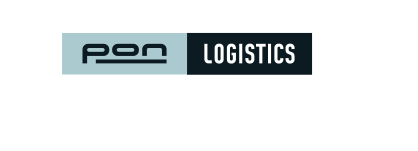NUMBER 1 / ARTICLE 4 / 2020
Biodiesel for Greener Transportation Pays Off
Some years back, Pon defined clear goals regarding our CO2 production. For the year 2020, our goal was to bring down CO2 emissions by 20% through reduction and greener operations. And we’re going to make it. A key element in accomplishing this goal is to green our transportation, including through the use of biodiesel (HVO) as a fuel.
Pon Logistics has a specific Transportation department. This department is led by Henk Heijnen, who is also the Category Leader Logistics at Pon Procurement. Henk relates, “In my role, I do my best to achieve synergy between the various companies as to quality, service and costs. If you want to become greener, you have to take all these factors into account too.”
Transportation is one of the ‘Big Five’ at Pon when it comes to CO2 emissions. At the very top are hired transportation (the trailers that take cars and parts to the dealers, among other things) and lease cars (all company cars). The next ones are waste production, energy consumption and travel. To help bring down our CO2 emissions, at the end of 2016 Henk’s department was presented with the challenge of lowering the transportation’s CO2. Along with other CO2 reductions and compensation measures, this contributes to our ‘greater goal’: a CO2-neutral Pon. In 2018, we managed to achieve this goal for our Dutch companies. The locations outside the Netherlands will follow.
“We investigated our options. In the end, there were two directions we could go; reduction and greening,” Henk explains. “We’d already done a lot of work on reduction, such as optimizing the routes and load utilization. There wasn’t much more to be gained on that end. Greening still offered possibilities, however. Though electrification is one way to do this, there wasn’t much available in this area. Still isn’t, actually. Another option was to switch to sustainable fuels such as LNG, CNG or biodiesel. We opted for Hydrotreated Vegetable Oil (HVO). This is a synthetic fuel produced from biomass, and achieves enormous CO2 savings (±89%). An additional benefit is the fact that MAN has trucks available that are HVO-proof.”
Our carrier Koopman seemed an ideal partner for this venture. “They handle nearly 55% of our shipments, and our sustained long-term relations of almost 45 years increased their willingness to make the investment. They installed an HVO fuel system at their premises in Nijkerk and purchased several MAN trucks that can drive on HVO. These are now used to ship both cars and parts. This enabled us to green 10% of Pon’s fuel use in 2018, even rising to 15% in 2019. To achieve this year’s intended 20% CO2 reduction, we will need to increase our green fuel use to 22% through HVO. That’s absolutely doable.”
One disadvantage is HVO’s higher cost compared to diesel. Sustainability isn’t cheap; that’s just the way it is. “However, we have managed to compensate for that cost through the launch of Supply Chain Optimization Projects (SCOP),” Henk declares enthusiastically. “This includes a more flexible approach to lead times, allowing us to increase the average number of cars per load for fewer total miles. That’s how we make greening pay off.”



